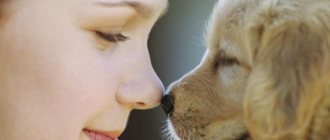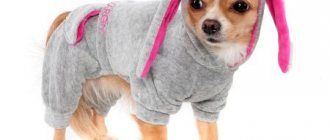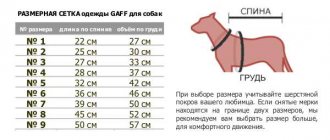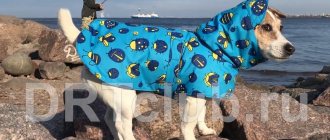Autotrophs (producers)
Autotrophs are living organisms that make their own food, that is, their own organic compounds, from simple molecules such as carbon dioxide. There are two main types of autotrophs:
- Photoautotrophs (photosynthetic organisms) such as plants process energy from sunlight to produce organic compounds - sugars - from carbon dioxide during the process of photosynthesis. Other examples of photoautotrophs are algae and cyanobacteria.
- Chemoautotrophs obtain organic substances due to chemical reactions that involve inorganic compounds (hydrogen, hydrogen sulfide, ammonia, etc.). This process is called chemosynthesis.
Autotrophs are the basis of every ecosystem on the planet. They make up the majority of food chains and webs, and the energy obtained through photosynthesis or chemosynthesis supports all other organisms in ecological systems. When it comes to their role in food chains, autotrophs can be called producers or producers.
Heterotrophs (consumers)
Heterotrophs , also known as consumers, cannot use solar or chemical energy to produce their own food from carbon dioxide. Instead, heterotrophs obtain energy by consuming other organisms or their byproducts.
People, animals, fungi and many bacteria are heterotrophs. Their role in food chains is to consume other living organisms. There are many species of heterotrophs with different ecological roles, from insects and plants to predators and fungi.
Roles of organisms in a community
Squirrel is a herbivore. She collects all kinds of mushrooms and pins them on tree branches to dry. To protect itself from winter lack of food, it stores reserves in the hollow: nuts and acorns.
In the fall, the badger begins to prepare for winter hibernation - it eats itself, stuffing everything it comes across inside. The badger is an omnivore; it eats wild berries and fruits, beetles and slugs. Lizards, frogs and mice also serve as food for him.
The fox is a predator, lives in the forest and eats what it catches. She hunts mice and sometimes partridges. Runs after hares. In winter, it comes close to human settlements and attacks poultry.
The 3 animal food chains described are the simplest.
Destructors (reducers)
Another consumer group should be mentioned, although it does not always appear in food chain diagrams. This group consists of decomposers, organisms that process dead organic matter and waste, turning them into inorganic compounds.
Decomposers are sometimes considered a separate trophic level. As a group, they feed on dead organisms coming from various trophic levels. (For example, they are able to process decaying plant matter, the body of a squirrel malnourished by predators, or the remains of a deceased eagle.) In a sense, the trophic level of decomposers runs parallel to the standard hierarchy of primary, secondary, and tertiary consumers. Fungi and bacteria are key decomposers in many ecosystems.
Decomposers, as part of the food chain, play an important role in maintaining a healthy ecosystem because they return nutrients and moisture to the soil, which are then used by producers.
Definition of links
A combination of organisms of different types forms biocinosis. The stability of this ratio is maintained during the distribution of nutrients throughout food chains. The sequence can contain up to 5 links.
The links are divided into three types:
- decomposers;
- producers;
- consumers.
Properties of producers
Producers are representatives who convert inorganic elements into organic mass. This category includes green plants that produce energy through photosynthesis. Chlorophyll is involved in the process of photosynthesis, which forms a green pigment in plant leaves. Autotrophs create their own cells under the influence of light and inorganic elements. These organisms occupy the first stage of the food cycle. Food for producers is starch and other nutrients from soil, water and light.
The combination of chemosynthesis and photosynthesis transforms raw materials into cells. There are two types of producers, which are called: chemoautotrophs and photoautotrophs. The first type belongs to the aquatic ecosystem (algae, phytoplankton), the supply of inorganic substances occurs due to the interaction of inorganic elements. Photoautotrophs, when exposed to light as a food source, produce useful substances. These are representatives of the terrestrial ecosystem - most of the plants, trees, and other species growing in forests, steppes, savannas and fields.
Features of consumers
These are organisms that consume substances in finished form. These include: bacteria, animals, parasitic plants, predatory species and humans. Representatives of this group cannot convert inorganic compounds into organic matter. They have an animal type of nutrition. There is a division into herbivores and carnivores.
There is also a separate group - omnivores, who feed equally on plants and animal organisms.
This is the consumer class. Scientists distinguish two subtypes of this species: chemoheterotrophs and photoheterotrophs. The first type releases energy during the oxidation and interaction of inorganic compounds (animals and humans). The second subtype receives energy from light. Their growth and development is possible only with the use of organic matter and under rays of light.
Types of decomposers
This class is classified as destructors. Organisms process nonliving organic matter. In nature, they occupy a separate trophic niche. As organisms process dead matter, they replenish the soil with nutrients and water.
Each link in this chain occupies a specific trophic level:
- At the first level there are producers that form organic mass.
- On the second link are consumers of the herbivorous type.
- The third is carnivores, consuming herbivorous representatives.
- The fourth are species that live off other carnivores.
The decomposition of organic matter occurs in several ways: the conversion of carbohydrates into ammonia, carbon dioxide and water, decomposition with the help of microorganisms, which as a result forms humus in the soil.
Levels of the food (trophic) chain
Diagram of the Levels of a Food Chain
A food chain is a linear sequence of organisms that transfer nutrients and energy from producers to top predators.
The trophic level of an organism is the position it occupies in the food chain.
First trophic level
The food chain begins with an autotrophic organism, or producer , producing its own food from a primary energy source, typically the sun or energy from hydrothermal vents at mid-ocean ridges. For example, photosynthetic plants, chemosynthetic bacteria and archaea.
Second trophic level
Next come the organisms that feed on autotrophs. These organisms are called herbivores or primary consumers and consume green plants. Examples include insects, hares, sheep, caterpillars and even cows.
Third trophic level
The next link in the food chain are animals that eat herbivores - these are called secondary consumers or carnivores (for example, a snake that eats hares or rodents).
Fourth trophic level
In turn, these animals are eaten by larger predators - tertiary consumers (for example, an owl eats snakes).
Fifth trophic level
Tertiary consumers are eaten by quaternary consumers (for example, a hawk eats owls).
Every food chain ends with an apex predator or superpredator - an animal with no natural enemies (for example, a crocodile, polar bear, shark, etc.). They are the “masters” of their ecosystems.
When any organism dies, it is eventually eaten by detritivores (such as hyenas, vultures, worms, crabs, etc.) and the rest is decomposed by decomposers (mainly bacteria and fungi), and energy exchange continues.
Arrows in a food chain show the flow of energy, from the sun or hydrothermal vents to top predators. As energy flows from body to body, it is lost at each link in the chain. The collection of many food chains is called a food web.
The position of some organisms in the food chain may vary because their diet is different. For example, when a bear eats berries, it acts as a herbivore. When it eats a plant-eating rodent, it becomes a primary predator. When a bear eats salmon, it acts as a superpredator (this is due to the fact that salmon is the primary predator because it feeds on herring, which eats zooplankton, which feeds on phytoplankton, which generate their own energy from sunlight). Think about how people's place in the food chain changes, even often within a single meal.
Pasture connection
The grazing chain begins with plants. The links pass from herbivores to predators. In this case, up to 90% of energy is lost during its transfer to subsequent consumers. Such forms are divided into chains of predators and parasites.
An example of the sequence: cereals - gopher - fox - carrion beetle. It is necessary to indicate that each subsequent link cannot follow other branches. The chain is single, it ends with only one predator. The number of subsequent members is always less than those who came before him. An example that can be offered: pine - aphids - ladybugs - spiders - insectivorous birds - predators.
Correctly constructed chains of parasites differ from those of carnivores. In them, subsequent links increase in number, but they decrease in size. An example can be given: grass - herbivores - fleas - flagellates.
The correct process of energy exchange must always continue. Any organism, even after death, becomes a source of nutrition for detritivores. And the remnants are destroyed by decomposers. But not all the energy goes to consumers, since they cannot absorb large amounts at one time. Detrital chains can be observed in any ecosystem.
Types of food chains
In nature, as a rule, there are two types of food chains:
- pasture
- detrital
Grassland food chain
Grassland food chain diagram
This type of food chain begins with living green plants to feed the herbivores on which carnivores feed. Ecosystems with this type of circuit are directly dependent on solar energy.
Thus, the grazing type of food chain depends on the autotrophic capture of energy and its movement along the links of the chain. Most ecosystems in nature follow this type of food chain.
Examples of grazing food chains:
Grass → Grasshopper → Bird → Hawk;
Plants → Hare → Fox → Lion.
Detrital food chain
Detrital food chain diagram
This type of food chain begins with decaying organic material—detritus—that is consumed by detritivores. Then, predators feed on detritivores. Thus, such food chains are less dependent on direct solar energy than grazing ones. The main thing for them is the influx of organic substances produced in another system.
For example, this type of food chain is found in the decaying litter of temperate forests.
Detrital links
The detrital succession begins with dead organisms. This organic matter is eaten by invertebrate animals or decomposed by bacteria and fungi. There are three types of organisms in the chain:
- detritus - dead components;
- detritivores - those who eat them;
- destructors are destroyers.
The characteristic features of the chain are the presence in two ecosystems, the presence of several consumers at once, and a connection with the pasture sequence. Usually one form is dominant over the other. But underground, where sunlight does not reach, only the detrital system is present.
Food chains are not isolated, they are branched. One producer can have several consumers at once. The latter sometimes have 2-3 power sources. And only they themselves can determine which one to choose today.
A typical example of a detrital food chain: dead animals - fly - frog - snake. Trophic levels are formed in sequence. On the first there is dead organic matter, on the second there is a weaker carnivore, the next ones are occupied by strong predators. Humans use detritus food chains more often than others. It is at the head of the sequence, since it can eat almost any animal.
Energy in the food chain
Energy is transferred between trophic levels when one organism feeds on and receives nutrients from another. However, this movement of energy is inefficient, and this inefficiency limits the length of food chains.
When energy enters a trophic level, some of it is stored as biomass, as part of the body of organisms. This energy is available for the next trophic level. Typically, only about 10% of the energy that is stored as biomass at one trophic level is stored as biomass at the next level.
This principle of partial energy transfer limits the length of food chains, which typically have 3-6 levels.
At each level, energy is lost in the form of heat, as well as in the form of waste and dead matter that decomposers use.
Why does so much energy leave the food web between one trophic level and the next? Here are some of the main reasons for inefficient energy transfer:
- At each trophic level, a significant portion of energy is dissipated as heat as organisms perform cellular respiration and move around in daily life.
- Some organic molecules that organisms feed on cannot be digested and are excreted as feces.
- Not all individual organisms in a trophic level will be eaten by organisms from the next level. Instead, they die without being eaten.
- Feces and uneaten dead organisms become food for decomposers, who metabolize them and convert them into their energy.
So, none of the energy actually disappears - it all ends up producing heat.
Examples
In deciduous forests
The detrital trophic type is most often found here; a certain part of the energy exchange occurs due to the processing of forest litter by microbacteria.
The usual food chain in deciduous forests is made up of three to four niches:
- Tree seeds - wood mouse - eagle owl. In this scheme, the tree is a producer, a consumer of the first order - the mouse eats the product it produces - the seed, and it, in turn, is caught by the eagle owl, whose food supply consists of 60% small rodents.
- Bark of a tree or bush - bark beetle - sparrow - hawk. This type is more complex - there are consumers of three categories. Plant food - bark - is used as food for the arthropod bark beetle. He becomes the prey of a small insectivorous bird - such as a sparrow. He falls into the claws of a large bird of prey - a hawk, which feeds on small brothers and mammals.
- Herbaceous plant - caterpillar - large beetle (fragrant beetle) - tit - falcon. The presented line is one of the most complex in the forest. It contains two types of insects - heterotrophs, one of which is carnivorous.
The richer the species diversity in a natural area, the more complex the trophic pyramids found on its territory will be.
In mixed forests
This zone is distinguished by a wide habitat of many varieties of living creatures.
Here are a couple of examples:
- Mushroom - elk - bear. A short relationship, but one that fully reflects the characteristics of the local flora and fauna. Autotrophic fungi are consumed by the phytophagous moose. In nature, only an even more powerful animal, the bear, dares to hunt such a powerful ungulate. It is the clubfoot that is the crown of this ecosystem, having no natural enemies.
- Spruce - wood-boring beetle - woodpecker - falcon - tick. In this case, the chain closes on a decomposer - a parasite that feeds on the blood of a falcon. The first part of the sequence is similar to the previous one, the second contains a destructive insect belonging to the group of parasitic organisms. Their participation in the cycle of substances is very typical for forest areas.
Finally, it is worth noting that the presence of saprophagous bacteria in the food web is a common occurrence for almost any type of trophic relationships in the mentioned ecosystems.
In coniferous forests
Such forests are found mostly in the natural zone of taiga and tundra.
Trophic connections here are similar to the previous ones:
- Pine - squirrel - fox - flea. The four-level chain depicts a relationship typical of the taiga: the squirrel feeds on seeds from pine cones, and itself becomes prey for a large mammal - the red fox. And on the skin of the predator there are parasites - fleas that suck blood.
- Lichen – deer – lynx. Mosses and lichens grow in the northern forests. These plants are the basis of the diet of deer. The latter are often hunted by large taiga cats - lynxes.
- Humus – detrital bacteria – unicellular – fungi – wild boar – bear. Such long chains are typical for coniferous lands. They involve microscopic organisms as consumers.
In addition, detrital sequences are common in such an ecosystem, since the process of decay of animal and plant remains is extremely important for the normal functioning of forests.











